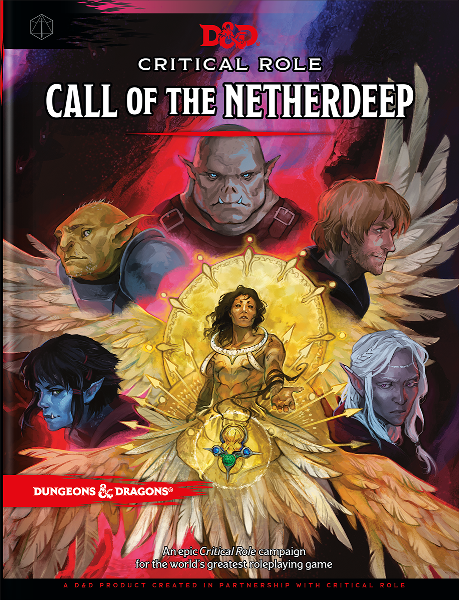Baseline Physics, Part 2
By The Warden

Every RPG provides its own interpretation of its universe and how living creatures affect and are affected by it, something I call the game’s baseline physics. Last week, we talked about this design concept and how much of an impact it can have in any game. Today, I want to take some time to delve into the most common uses of baseline physics in your average RPG.
While there is an incredibly long list of possible baselines to consider, let’s keep this simple so I can stay within my self-imposed word count limit, OK? After some careful consideration, I’m going to discuss some of the most common baselines for your typical RPG, regardless of genre, setting, and other specific matters of game design: environment, gravity, magic/technology, and health.
ENVIRONMENT
Every game has to take place somewhere in the universe, doesn’t it? Maybe not in our universe as we know it right now, but maybe in a galaxy far, far away and yet somehow in the past. The term “environment” is about more than global geography when it comes to baseline physics; it’s about where your game exists in correspondence to everything. Where does your game take place in the universe?
Does your game exist on a planet or a plane of existence? Is the planet round or flat? Maybe a square? How much water exists? What kind of climate dominates the landscape or is a mixture of many climates co-existing in one setting? All of these factors rely on an understanding of where your setting exists in its universe, even if the overall universe is no more than a single land mass. Environment provides players with visual cues to this fundamental baseline and builds off our innate understanding of how physics works on our world. If you have an RPG dominated by cold weather and snow storms, players will automatically assume the setting is located at a planet’s north pole or further away from the sun. Providing a snow-covered world with a raging sun dominating the sky threatens to break the players’ suspension of disbelief and your game is already struggling from moment one.
For a science fiction or science fantasy game, you’re developing a much larger field of vision when it comes to the universe and how much of it you’ll need to cover. Space travel requires the means to break a planet’s gravitational pull and cover incredible distances without depending on future generations to finish the trip. Does everything take place in the same galaxy? Universe? Or does it all revolve around one particular planet and is that planet Earth or somewhere else?
Knowing how much physical space your game will occupy determines numerous factors, not the least of which is technology and knowledge. As human beings who can observe a space station orbiting our home planet, we have an understanding of how the universe works or else we’d never have been able to break through the atmosphere in the first place. Building a space program does not happen with a group of people living in the same house, it takes a crew assembled from numerous backgrounds, training, and experience from as far as your resources can reach to make it happen. These people must be advanced enough to make the idea of space travel feasible and that doesn’t mean every civilization/planet in your setting must breed pilots. Ewoks, for example, are not a common sight beyond the forest moon of Endor. The more localized and primitive your game’s setting, the less detail you need concern yourself over. For example, if you’re building a historical RPG about neanderthals, you actually have a lot more flexibility to improvise versus a historical game about Europeans crossing the Atlantic to discover North America.
GRAVITY
This one tends to get glossed over by many designers and in many games, but that’s not because of laziness or ignorance. Creating a game where everything we know about gravity is tossed out the window creates monumental challenges and since we’re all perfectly comfortable with how gravity works for us, why fix what ain’t broke?
Determining the role of gravity in an RPG does not require a complete rewrite. It can be something very minor yet incredibly suggestive. A wushu RPG, for example, assumes the premise that gravity’s can be ignored for the purpose of making a really sweet double kick attack or when a character wants to run along the side of a wall rather than climb it. Fantasy games provide characters and monsters who can fly or provide means of transportation that can fly in spite of realistic physics (such as the airships of Earthdawn). Setting your game’s gravity baseline sets the bar for how matters of travel and action will take place in upcoming adventures and this small decision can have a major impact on character descriptions.
MAGIC/TECHNOLOGY
Unless you’re Shadowrun, you’re likely going with one or the other. Either the magnificent cities of your greatest empire are possible because of an ability to manipulate spells or because of a deep seeded history of education and knowledge culminating into a mastery of technology. Do the characters teleport or drive? Summon a mystical creature or commandeer a space shuttle?
This baseline probably gains the most attention in nearly every RPG, even ones taking place in the everyday real world, but the key decision of inserting magic and/or technology will determine one major result in any RPG: cheating. This baseline is what provides the excuse for every other baseline to occur, from the size of your game’s environment and how characters reach their destination to natural limitations placed on each character inhabiting the game.
Either case allows the creator (and by its natural extension, the players) freedom from any of the typical restraints available to common folk in the world, but avoided by the central characters. For example, traversing the Outer Planes of D&D mythology would require an entire campaign just to reach the next “adjoining” plane were it not for the ultimate cheat: portals. My previous Pathfinder campaign overcame the hurdle of maintaining contact with our sponsor waiting thousands of miles away by providing us with a magical crystal capable of sending a telepathic signal to the owner of the matching set. However you choose to use it, magic and/or technology is what allows players to handle the scale and harsh reality of a magnanimous setting.
HEALTH
From there, health comes into play and by that, I mean the longevity of your average central character within the game. Of all the baselines covered today, this one may be the most prevalent and actively considered as it affects the role and impact of combat in the game. The most common way of looking at this baseline is to ask yourself if your game will be gritty or fantastic. Gritty games feature high-risk combat with little room for damage, wound penalties, and other restrictions when a character gets beat on by their enemies; fantastic games find it completely plausible for characters to suffer multiple strikes, blows, and shots before they stagger to the ground in defeat (notice how I didn’t say “death”).
While character health is typically viewed as a game mechanic rather than a baseline, it’s actually a bit of both if you consider how players will view the world you’ve created for them through the eyes of their characters. If those characters know they can withstand a few bullets to the chest and never risk losing a limb to gangrene, it will have a drastic effect on how they interact with that world. Quite a few RPGs provide different baselines for character health based on the type of character involved, such as mooks with only 1 solid hit required to bring them down compared to the durability of the main characters and villains.
An often ignored aspect of this baseline is the day-to-day impact of health, not just the effects of combat and other intense situations. This can also reflect mental health (such as Sanity from Call of Cthulhu), but health issues are around the world. How long do your average members of the common races live? How rampant is disease? And are these diseases enough of a major impact to warrant installing them into your game? Health pertains to anything that encourages and threatens the existence and continuation of a species over generations, not just how it impacts individuals in a dungeon crawl. If the elves of your world live as long as humans, how much of an impact will that cause to their culture?
THIS IS JUST THE BEGINNING…
While there are quite a few more I can think of off the top of my head, these four baselines open up a literal and imaginative Pandora’s Box of possibilities for your world. From here, individual RPGs and their unique worlds can branch into how characters interact with magic or technology, how society has adapted to their environment, which species are the dominant lifeforms in your world, and so much more. Depending on the initial concept for your game, you may want to highlight other baseline physics right off the bat or extend your originals into new directions. However you choose to do it, establishing your RPG’s baseline physics will help you clear up the clutter and cut straight to the point.



